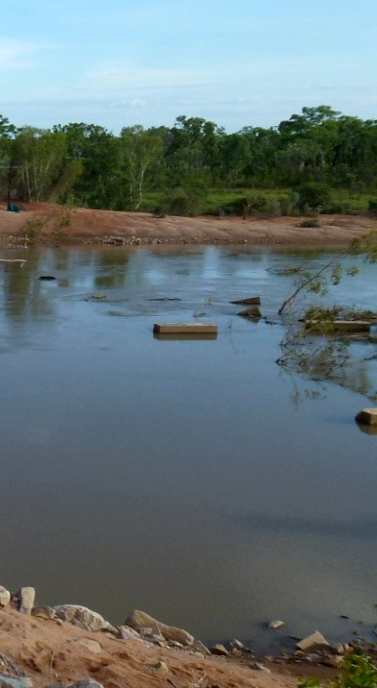Drought lingers in key catchments
 Experts say some of Victoria's water catchments have not recovered from the Millenium Drought.
Experts say some of Victoria's water catchments have not recovered from the Millenium Drought.
One-third of the water catchments in a recent study had not recovered from a severe drought nearly eight years after the event.
It is generally believed that rivers and underground water supplies eventually replenish following periods of severe drought or flood, but the new findings challenge this widely held view.
Researchers used statistical models of rainfall and streamflow at 161 water catchments across Victoria, each with over 30 years of data and no upstream dams or water extractions. The area surveyed is about the size of the United Kingdom.
Researchers discovered that when the drought ends, some rivers continue to behave like they are still in a drought for years afterwards, and many have not yet recovered.
Specifically, the runoff, as a fraction of precipitation, had not recovered in 37 per cent of water catchments in Victoria after Australia’s Millennium Drought, and the number of recovering water catchments remained stagnant.
This means that 100mm of precipitation before the drought in 1990 created more river flow than the same 100mm in 2017, therefore delivering a 30 per cent reduced streamflow after the drought.
The number of water catchments with a low or very low runoff state increased rapidly from 1996 to the end of the meteorological drought in summer 2010. By 2011, only 15 per cent of water catchments had recovered.
The Millennium Drought, regarded as one of the worst droughts to hit Australia in its modern history, crippled the Murray-Darling Basin and placed extreme pressure on ecosystems, agricultural production and urban water supply in the south-eastern part of the country. It ended with a La Nina weather event in 2010.
A water catchment, or watershed, is any area of land that captures precipitation, which then flows into common outlets, such as a river, stream, bay or lake. Almost all of Victoria’s water supply comes from streamflow.
Research leader Dr Tim Peterson from Monash University says the regeneration of water catchments after severe drought has major implications for global long-term water resource planning and aquatic environments, especially when climate change is added on top of their findings.
“Our findings suggest hydrological droughts can persist indefinitely after meteorological droughts and that the mechanism for recovery remains an open question,” Dr Peterson said.
“This new discovery just appears to be the way catchments naturally behave. It’s not explained by factors like land use. They are just more complex than we thought.”
Each water catchment analysed for this study had at least 15, seven and five years of streamflow observations before, during and after the Millennium Drought respectively, and had no major upstream reservoirs or river extractions.
Across all 161 water catchments, researchers found eight years into the drought, 51 per cent of the catchments switched into a low or very low runoff state. When the drought ended in 2010, primarily the eastern water catchments returned to a normal runoff state (see figure).
Importantly, by mid-2017, nearly eight years after the drought, more than one-third of water catchments still remained within a low runoff state, and have not recovered back to the pre-drought behaviour.
Researchers say they have shown that water catchments are more complex than previously thought, and that their findings will help water agencies better plan for the future.
The full study is accessible here.







 Print
Print